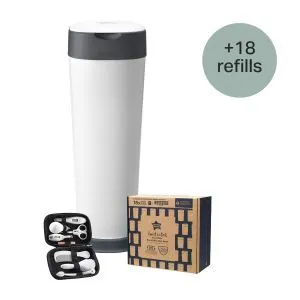
Ultimate XL Nappy Disposal Bundle with 18 Refills
Bundle & Save 40%
Subscription orders can be cancelled at anytime. Free delivery on all subsequent subscription orders. Find out more about subscriptions.
They’re easy and fuss free
Your products are automatically sent to you
You save up to 10% when you sign up for a subscription
You can cancel at any time
Sign up for EXTRA 15% off
Plus support and exclusive offers straight to your inbox.
You can unsubscribe at any time - see privacy policy.
Sign up for EXTRA 15% off
Plus support and exclusive offers straight to your inbox.
You can unsubscribe at any time - see privacy policy.
Choose Your Stage


